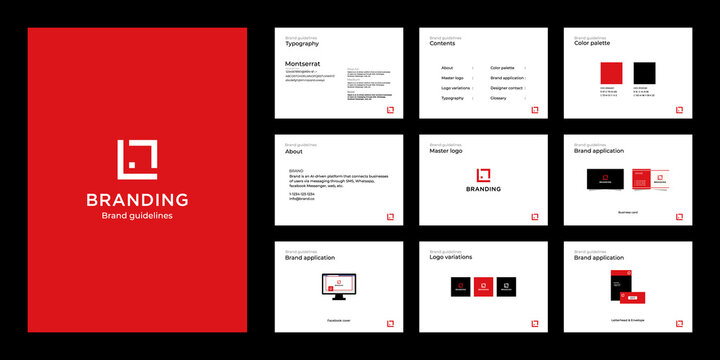Brand guidelines are a set of clearly defined elements, rules and standards that make up your particular brand. They tell people how to use, and importantly how NOT to use, your brand.
Brand guidelines help businesses create consistency across all marketing assets and communication channels, demonstrating what your company, brand or business does and what it stands for. Often owned by the marketing or communications team within your business, think of brand guidelines like a rule book for your business’s identity, both internally and externally.
What should a BASIC brand guidelines document include?
Brand guidelines can be as simple, or detailed as you like, but as a core set of elements to include, you should consider:
- Logo – guidelines on logo usage, plus file format(s), minimum and maximum sizes, contexts, spacing and usage permissions, e.g. where and how it should and shouldn’t appear
- Colour palette – including RGB, CMYK and Hex Codes
- Fonts, typefaces and text sizes – both print and digital
- Design elements – include examples of imagery, icons and photography to be used, plus any filters, overlays or design effects
- Design implementation – include examples of how your logo/brand should appear on marketing assets/promotional materials (e.g. business cards, brochures, website, promotional items)
What should a ROBUST brand guidelines document include?
Brand guidelines can be as simple, or detailed as you like, but as a core set of elements to include, you should consider:
- Logo – guidelines on logo usage, plus file format(s), minimum and maximum sizes, contexts, spacing and usage permissions, e.g. where and how it should and shouldn’t appear
- Colour palette – including RGB, CMYK and Hex Codes
- Fonts, typefaces and text sizes – both print and digital
- Design elements – include examples of imagery, icons and photography to be used, plus any filters, overlays or design effects
- Design implementation – include examples of how your logo/brand should appear on marketing assets/promotional materials (e.g. business cards, brochures, website, promotional items)
- History – a plotted history of where your company came from, and even where it’s headed
- Core Beliefs – a clear indication of your company’s vision, mission, values and ethos
- Pillars – the cornerstone principles that your company works within
- Policies – any policies that your company has adopted to make clear its operating model/procedures/standards
- Tone of voice – How your company communicates its key messaging and Unique Selling Points (USPs) and the difference in tone on various platforms (email vs. social media for example)
- Grammar fundamentals and rules – not everyone is good at grammar, so explain a few fundamentals (e.g. their, there, they’re – whose, who’s – affect, effect – your, you’re) and set the rules for your company (UK English vs. US English – e.g. color/colour, optimize/optimise, Oxford comma usage etc.)
- Audience profiles – identify and describe your key audiences and how you should and shouldn’t communicate with them
- Social Media guide – how your company talks on social media, how it does and does not communicate with its community, plus any parameters for image/word usage on your channels and the difference in tone of voice between channels
Who is Rikki Webster?
The short version
I’m a former Chief Marketing Officer who, after working around the globe for the world’s biggest brands, quit his six-figure salary job, took what he knew, and built an agency that delivered over 100 projects for clients in its first year.
But more than that…



